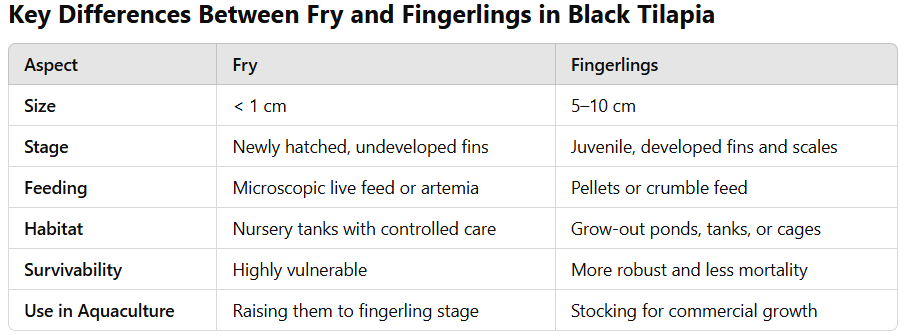Vietnam's Tilapia Industry: Growth, Achievements, and Future Prospects
Vietnam boasts over 250 facilities involved in tilapia production and trading nationwide, with around 50 key operations stocking approximately one million broodstocks. In 2018, the industry produced over:
1.2 billion fingerlings
500 million fries,
meeting 75% of domestic farming demands.30,000 hectares of commercial farming areas
1.2 million cubic meters of farming cages, predominantly in northern provinces such as Hải Dương, Bắc Giang, Bắc Ninh, Phú Thọ, Hòa Bình, and Hà Nội, alongside parts of the Mekong Delta.
In 2018, tilapia production reached 255,000 tons, a 1.1% increase compared to 2017. Exports spanned 68 countries, including major markets like the EU and the US, generating USD 45 million in revenue.
The Directorate of Fisheries has outlined ambitious plans to make tilapia a key aquaculture product, focusing on competitiveness, sustainability, and market-specific consumption. By 2030, Vietnam aims to:
Expand farming areas to 40,000 hectares
Increase cage farming to 1.8 million cubic meters
Boost production to 400,000 tons annually
Strategic Development Measures
Technology and Science Integration
Improving fry quality and growth performance
Enhancing food safety and implementing advanced farming technologies like biofloc, river-in-pond systems, and cage farming
Strengthening disease prevention, environmental monitoring, and product traceability
Production and Market Organization
Developing industry zones and services aligned with farming areas and value chains
Expanding exports to key markets such as the US, Canada, the Middle East, Southeast Asia, and Europe
Promoting domestic consumption alongside international sales
Credit to : VietFish Magazine
Body depth and deformities: The body depth and absence of deformities are key indicators of health and good farming practices, directly impacting yield and visual appeal.
Parasites and viral diseases: Effective biosecurity and water quality management are essential to produce disease-free fish.
Chemical-free: Our tilapia meets FDA approval standards, ensuring it is safe, chemical-free, and of the highest quality
What is the Difference between Fry and Fingerlings
What is the Difference between Fry and Fingerlings
The terms "fry" and "fingerlings" refer to different life stages of fish, particularly in aquaculture and fish farming, and they are critical in understanding the growth cycle of fish species like Black Tilapia (Oreochromis Niloticus or other related species)
Fish Fry
Definition:
Fry refers to the early stage of a fish's life immediately after it hatches from the egg and absorbs its yolk sac. At this point, the fish is still small, underdeveloped, and highly vulnerable.
Characteristics of Fry:
Size: Generally less than 1 cm (0.4 inches) in length.
Development: The digestive system, fins, and scales are not fully developed. They primarily rely on zooplankton or microscopic organisms in their environment for sustenance.
Habitat: Fry are usually kept in protected environments, such as nursery tanks, to ensure survival during this fragile phase.
Feeding: Initial feeding may include specially formulated fry feed, artemia (brine shrimp nauplii), or other microscopic live foods.
Importance in Tilapia Farming:
For Black Tilapia, this stage is crucial for survival and proper growth. Fry require consistent water quality, precise feeding schedules, and careful handling to avoid mortality.
Fingerlings
Definition:
Fingerlings represent the next stage of development after the fry stage. They are juvenile fish that have grown larger, gained scales, and resemble miniature versions of adult fish. The name "fingerling" comes from their size, typically about the length of a human finger.
Characteristics of Fingerlings:
Size: Usually 5–10 cm (2–4 inches) in length, depending on the species and farming conditions.
Development: Fingerlings have fully developed fins, scales, and a functional digestive system, enabling them to consume a broader range of feeds, including pelletized fish feed.
Feeding: Their diet transitions to larger feeds, such as crumble or small pellets designed for juvenile fish.
Habitat: They are typically transferred to grow-out ponds, tanks, or cages where they can mature further into market-size fish.
Durability: Fingerlings are stronger and more resilient than fry, with a lower risk of mortality under proper conditions.
Importance in Tilapia Farming:
Fingerlings are the stage at which farmers begin to focus on growth optimization and preparing the fish for commercial production. Black Tilapia fingerlings are particularly sought after for stocking in grow-out systems due to their faster growth rate and adaptability.
Significance for Black Tilapia Farming
Fry Stage: This stage requires intensive care to reduce mortality and ensure that a high percentage of fry grow into fingerlings. Poor management at this stage can severely impact overall yield.
Fingerling Stage: Farmers often purchase fingerlings instead of raising fry because they are stronger and ready for grow-out, reducing the initial risks and time investment required.
By understanding these distinctions, tilapia farmers can make informed decisions about breeding, stocking, and growing methods, ultimately optimizing productivity and profitability in their operations.
“At Khoi Viet Seafood, we are committed to maintaining the highest standards of hygiene and quality. Our tilapia is raised without the use of antibiotics or harmful additives, following sustainable farming practices that meet global food safety and environmental standards. Each fish is carefully cultivated to ensure a robust, symmetrical body free from deformities, providing optimal yield and strong market appeal. Grown in controlled environments with strict biosecurity measures, our tilapia is guaranteed to be free from parasites and viral diseases, delivering safe, premium-quality seafood every time.”





